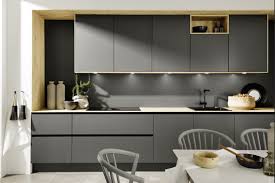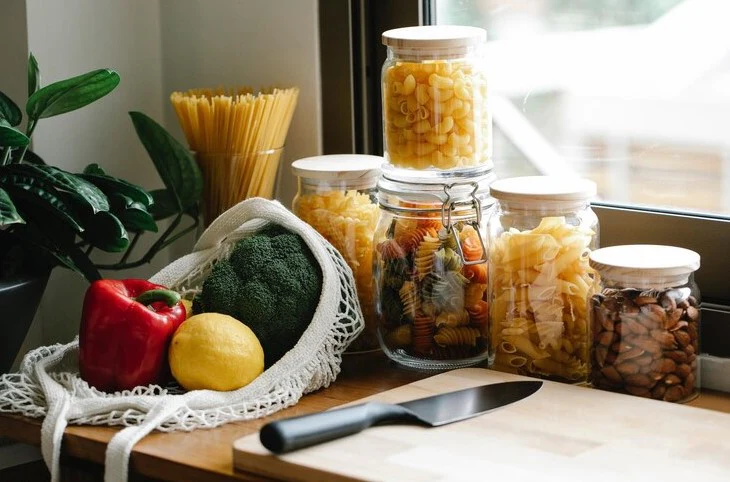The kitchen is often considered the heart of the home, and with the advent of smart technology, it has evolved into a hub of innovation and convenience. Smart kitchen design integrates advanced technology with practical functionality, enhancing efficiency, safety, and the overall culinary experience. Whether you’re renovating your existing kitchen or designing a new one, incorporating smart technology can significantly elevate your space. This guide will provide comprehensive tips for designing a smart kitchen that meets your needs and preferences.
Planning Your Smart Kitchen

Assessing Your Needs and Goals
Before diving into the specifics of smart kitchen design, it’s essential to assess your needs and goals. Consider how you use your kitchen daily and what tasks you’d like to streamline or improve with technology. Do you need a refrigerator that helps you manage groceries or an oven you can control remotely? Understanding your priorities will help you make informed decisions.
Budget Considerations
Smart kitchen technology ranges from affordable gadgets to high-end appliances, so it’s crucial to establish a budget. Prioritize which features are most important to you and allocate funds accordingly. Remember that investing in quality smart appliances can save you money in the long run through energy efficiency and enhanced functionality.
Researching the Latest Smart Kitchen Trends and Technologies
Stay updated with the latest trends and innovations in smart kitchen technology. From voice-activated assistants to advanced cooking appliances, the market is constantly evolving. Reading reviews, visiting showrooms, and consulting with experts can provide valuable insights into what’s available and what might work best for your kitchen.
Layout and Space Optimization
Open Floor Plans and Workflow Efficiency
An open floor plan can enhance the functionality of your smart kitchen by promoting easy movement and interaction. Consider the workflow in your kitchen – the sequence of steps you take while preparing meals. An efficient layout, often referred to as the “kitchen triangle” (connecting the sink, stove, and refrigerator), can minimize unnecessary steps and enhance productivity.
Zone Planning for Different Kitchen Activities
Divide your kitchen into zones based on different activities, such as cooking, cleaning, and storage. This zoning approach ensures that everything you need for a specific task is within easy reach. For instance, the cooking zone should include the stove, oven, and countertop space for preparation, while the cleaning zone should be centered around the sink and dishwasher.
Maximizing Storage with Smart Solutions
Smart storage solutions can help you make the most of your kitchen space. Consider pull-out shelves, lazy Susans, and vertical storage options to keep your kitchen organized. Integrate smart storage systems that use sensors and automation to optimize space and provide easy access to frequently used items.
Smart Appliances and Fixtures
Choosing the Right Smart Appliances
Selecting the right smart appliances is crucial for a fully functional smart kitchen. Here are some key appliances to consider:
- Smart Refrigerators: These refrigerators can do more than just keep your food cold. They can monitor your groceries, suggest recipes based on available ingredients, and even allow you to order groceries online. Brands like Samsung and LG offer advanced models with touchscreens and voice control.
- Smart Ovens and Cooktops: Smart ovens and cooktops provide precise temperature control, remote operation, and recipe guidance. Some models even feature built-in cameras that let you monitor your food from your smartphone. Look for brands like GE and Whirlpool for innovative options.
- Smart Dishwashers: Smart dishwashers can be controlled remotely, provide notifications when a cycle is complete, and optimize water and energy usage. Bosch and Whirlpool are popular brands offering these features.
- Smart Coffee Makers: For coffee enthusiasts, smart coffee makers can brew your favorite cup of coffee on schedule, controlled via smartphone or voice commands. Brands like Keurig and Hamilton Beach offer models with these capabilities.
Smart Sinks and Faucets
Smart sinks and faucets can enhance convenience and hygiene in your kitchen. Touchless faucets, which are activated by motion sensors, help prevent the spread of germs. Some smart faucets can dispense a specific amount of water at a set temperature, perfect for recipes and daily tasks. Moen and Delta are leading brands in this category.
Smart Lighting Solutions
Lighting plays a significant role in kitchen design. Smart lighting systems allow you to adjust brightness and color temperature to suit different tasks and moods. Consider installing under-cabinet lighting for better visibility and ambiance. Philips Hue and LIFX offer versatile smart lighting solutions that can be controlled via smartphone or voice assistant.
Integration and Compatibility
Ensuring Device Compatibility
When selecting smart kitchen appliances and devices, ensure they are compatible with your existing smart home ecosystem. Most smart appliances work with popular platforms like Amazon Alexa, Google Assistant, and Apple HomeKit. Compatibility ensures seamless integration and control over your entire smart home system.
Integrating with Existing Smart Home Systems
Integrate your smart kitchen devices with other smart home systems for a cohesive and convenient experience. For instance, linking your smart kitchen appliances with your home security system can provide alerts if an appliance is left on or if there’s a water leak. Home automation platforms like SmartThings and Wink can help manage and coordinate your devices.
Choosing a Central Control System
A central control system, such as a smart speaker or a dedicated touchscreen, can simplify the management of your smart kitchen. Devices like the Amazon Echo Show or Google Nest Hub provide visual and voice-activated control, allowing you to monitor and operate your appliances from a single interface.
Connectivity and Networking
Importance of Strong Wi-Fi Coverage
A reliable Wi-Fi connection is essential for the smooth operation of smart kitchen devices. Ensure your kitchen has strong Wi-Fi coverage to prevent connectivity issues. Consider placing your router centrally or using Wi-Fi extenders to improve coverage.
Using Mesh Networks for Consistent Connectivity
Mesh networks can provide consistent and robust Wi-Fi coverage throughout your home, including your kitchen. Systems like Google Nest WiFi or Eero create a network of nodes that distribute Wi-Fi evenly, eliminating dead zones and ensuring all your devices stay connected.
Securing Your Smart Kitchen Network
With the increasing number of connected devices, securing your smart kitchen network is crucial. Use strong, unique passwords for your Wi-Fi network and smart device accounts. Enable network encryption and regularly update your devices’ firmware to protect against vulnerabilities.
Energy Efficiency and Sustainability
Energy-Efficient Smart Appliances
Smart appliances are designed to be more energy-efficient than their traditional counterparts. They optimize energy usage based on your habits and preferences, helping you save on utility bills. Look for appliances with Energy Star certification to ensure they meet high energy efficiency standards.
Smart Thermostats and Climate Control
Smart thermostats can help maintain a comfortable kitchen environment while conserving energy. They learn your schedule and adjust the temperature accordingly. Brands like Nest and Ecobee offer smart thermostats that integrate with other smart home devices for comprehensive climate control.
Sustainable Materials and Practices
Incorporating sustainable materials and practices in your smart kitchen design can reduce your environmental impact. Choose eco-friendly materials for countertops, cabinets, and flooring. Implementing smart water-saving fixtures and energy-efficient lighting can further enhance sustainability.
Safety and Security Features
Smart Smoke and Carbon Monoxide Detectors
Safety is paramount in the kitchen. Smart smoke and carbon monoxide detectors can alert you to potential hazards even when you’re not home. They send notifications to your smartphone and can integrate with other smart devices to take automatic actions, such as turning off appliances. Nest Protect and First Alert offer reliable options.
Smart Cameras and Security Systems
Smart cameras and security systems can monitor your kitchen and provide peace of mind. Install cameras to keep an eye on your kitchen, especially if you have children or elderly family members. These systems can send alerts for unusual activity and allow you to check in remotely.
Child-Proofing with Smart Technology
Smart technology can enhance child safety in the kitchen. Install smart locks on cabinets containing hazardous materials and use smart sensors to monitor and restrict access to appliances. Voice-activated assistants can also help by providing reminders and alerts.
User Experience and Accessibility
Voice Control and Hands-Free Operation
Voice control is a cornerstone of smart kitchen design, offering hands-free operation and convenience. Devices like Amazon Echo and Google Nest can control your appliances, set timers, and provide recipe assistance with simple voice commands.
Touchless Technology
Touchless technology, such as motion-activated faucets and lights, enhances hygiene and ease of use. These features are particularly beneficial in a busy kitchen where your hands might be occupied or messy.
Designing for Different User Needs and Abilities
Smart kitchen design should accommodate users of all abilities. Consider adjustable countertops and cabinets, easy-to-reach appliances, and voice-activated controls to ensure the kitchen is accessible to everyone, including those with mobility issues or disabilities.
Aesthetic and Design Considerations
Blending Technology with Traditional Design Elements
While integrating smart technology, it’s important to maintain a cohesive and aesthetically pleasing design. Blend modern appliances with traditional elements to create a harmonious look. For instance, opt for smart appliances with finishes that match your existing decor.
Minimalist and Modern Smart Kitchen Styles
A minimalist and modern style often complements smart kitchen design. Clean lines, neutral colors, and uncluttered spaces highlight the sleekness of smart appliances. Integrated appliances that blend seamlessly into cabinetry can enhance the minimalist look.
Customization Options
Personalize your smart kitchen with customizable options. Many smart appliances offer customizable settings and interfaces, allowing you to tailor them to your preferences. Additionally, consider bespoke cabinetry and countertops that accommodate your specific needs and tastes.
Maintenance and Upkeep
Regular Updates and Maintenance for Smart Devices
Keeping your smart kitchen devices updated ensures they operate efficiently and securely. Regularly check for firmware updates and perform routine maintenance as recommended by the manufacturer.
Troubleshooting Common Issues
Familiarize yourself with common issues that might arise with smart kitchen devices and their solutions. Many manufacturers provide troubleshooting guides and customer support to help resolve problems quickly.
Long-Term Considerations for Smart Kitchen Upgrades
Plan for the future by considering how your smart kitchen can evolve. Choose modular and scalable design elements that allow for easy upgrades and additions as new technology becomes available.
Future-Proofing Your Smart Kitchen
Planning for Future Technology Advancements
Stay informed about emerging technologies and trends in smart kitchen design. Planning for future advancements ensures your kitchen remains functional and up-to-date for years to come.
Modular and Scalable Design Elements
Incorporate modular and scalable design elements that can adapt to new technology. This flexibility allows you to upgrade your kitchen without significant renovations.
Staying Informed About Smart Kitchen Innovations
Regularly researching and staying informed about smart kitchen innovations can help you make the most of new developments. Subscribe to tech blogs, attend industry events, and consult with experts to stay ahead of the curve.
Conclusion
Designing a smart kitchen involves more than just choosing the latest gadgets. It’s about creating a functional, efficient, and aesthetically pleasing space that enhances your daily life. By following these smart kitchen design tips, you can create a kitchen that not only meets your needs but also adapts to future advancements in technology. Embrace the convenience and innovation of a smart kitchen and enjoy the benefits of a more connected and efficient home.




